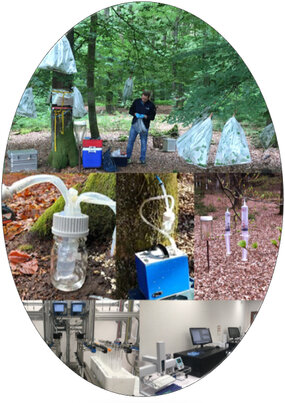Assessing tree water uptake in headwater catchments: limitations from d18O vs. d2H and potential added value from trace elements
Understanding water dynamics in the Critical Zone is key for better designing water management strategies, particularly in the light of climate change. Of specific interest in this context is the large amount of water exchanged between regolith and trees in forest ecosystems. In the coming years and decades, the frequency of droughts is likely to increase during vegetative periods. The lack of understanding of how and where tree water uptake is taking place across different regolith layers becomes a critical economic and societal issue – spanning from water resources strategy to forest management, even in temperate ecosystems.
Stable isotopes of water have been largely used as tracers in ecohydrology, contributing enormously to the development of various hypotheses and interpretations on tree water uptake dynamics and evapo-transpiration fluxes. However, many issues remain when using O-H stable isotopes to trace the origin of the tree water uptake. The lack of standard protocols for tree water sampling and analysis, alongside the little attention given to the effect that tree physiology and biochemistry may have on the isotopic composition of xylem water, still present limitations to the use of these tracers in the regolith-tree continuum.
Recent results on regolith-tree water exchanges in the Weierbach Experimental Catchment in Luxembourg will be presented. The objective is to illustrate the existing limitations of the “standard” d18O vs. d2H techniques and to promote trace elements (e.g. Pb radiogenic isotopes and Rare Earth elements) to give relevant complementary information on the fate of water, and related solutes, in the regolith-tree continuum.

